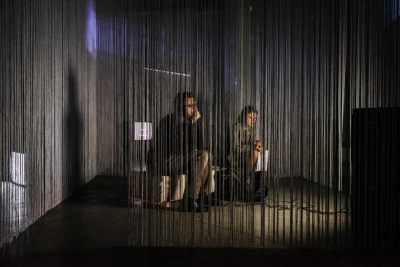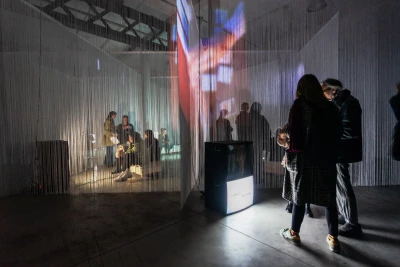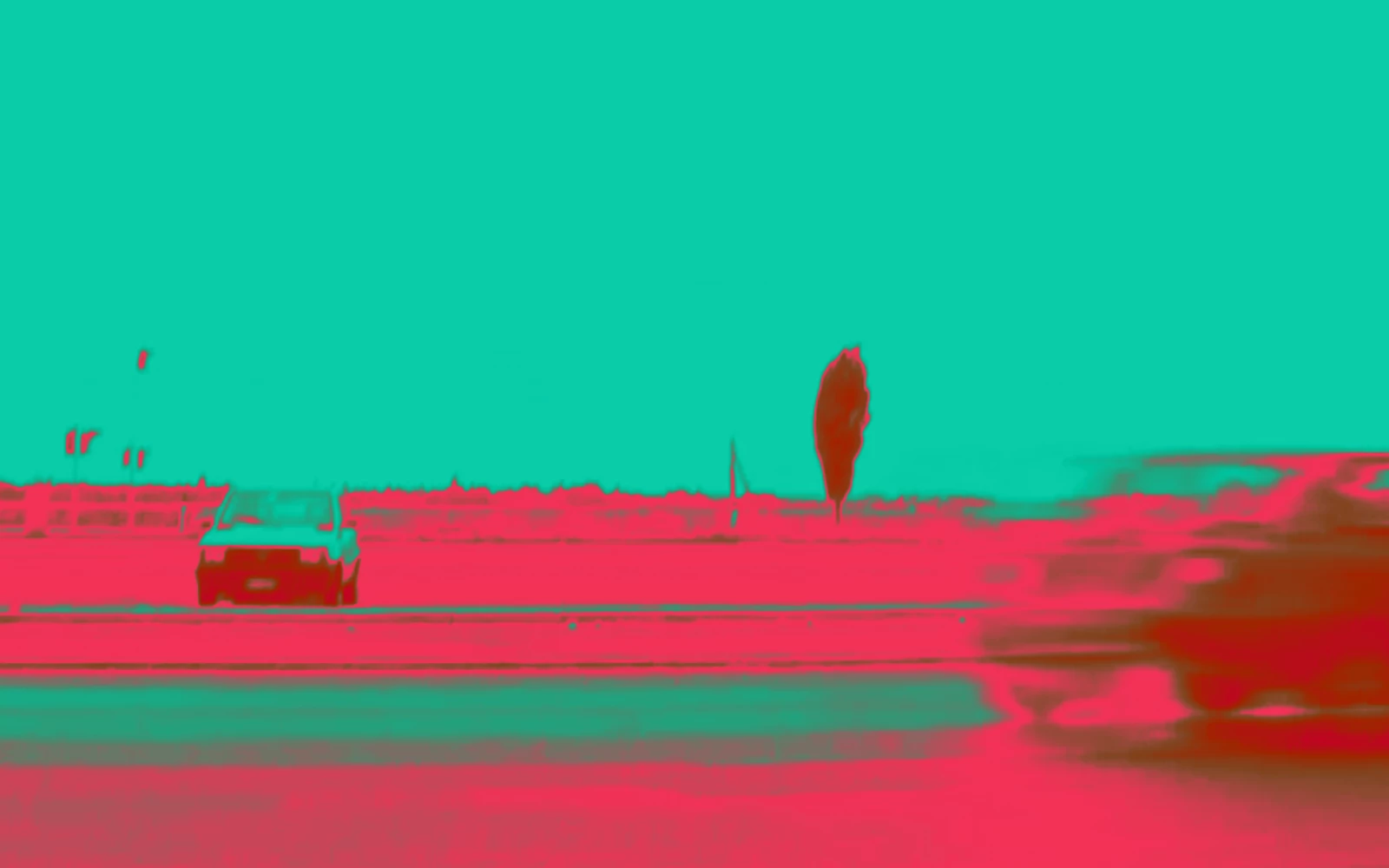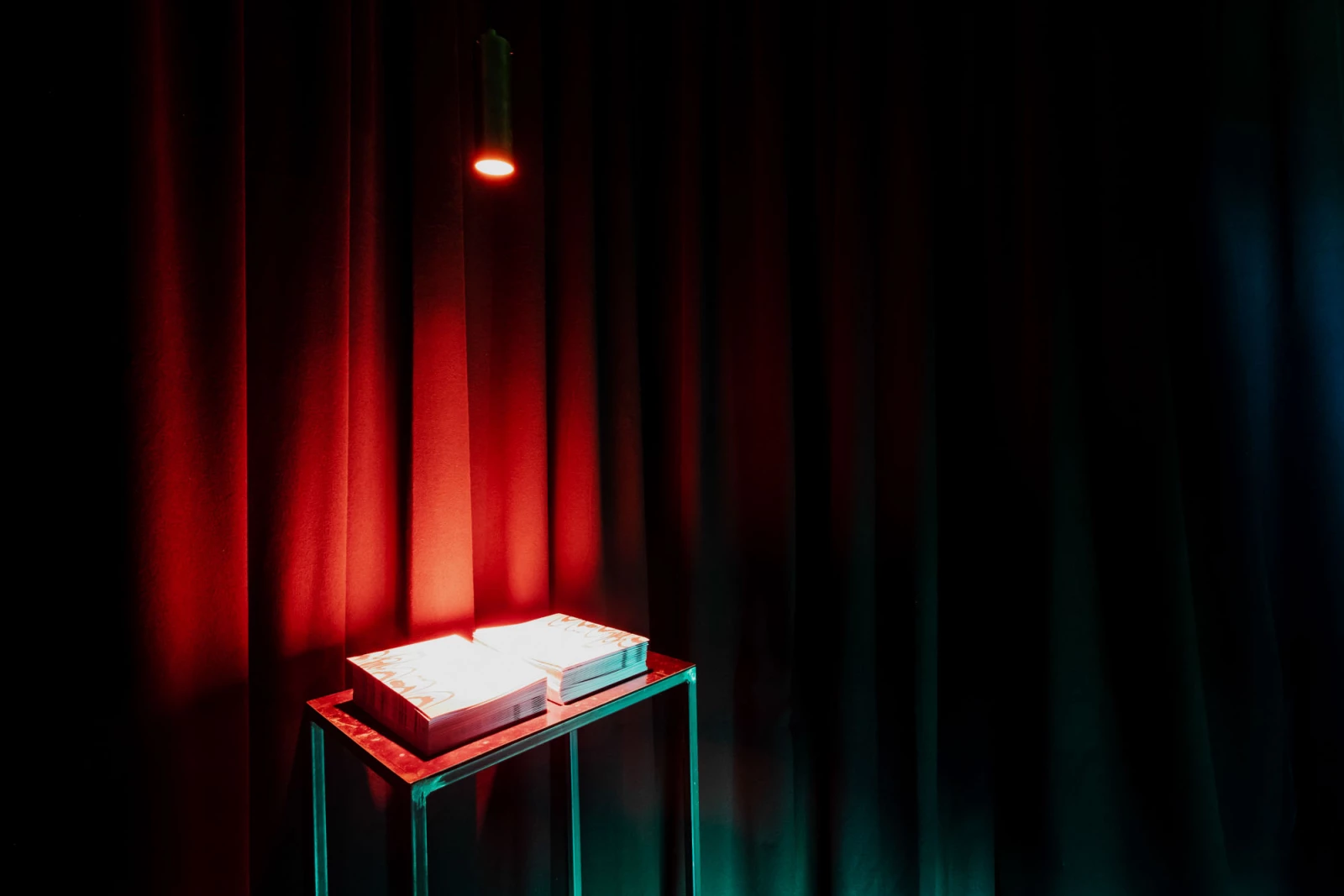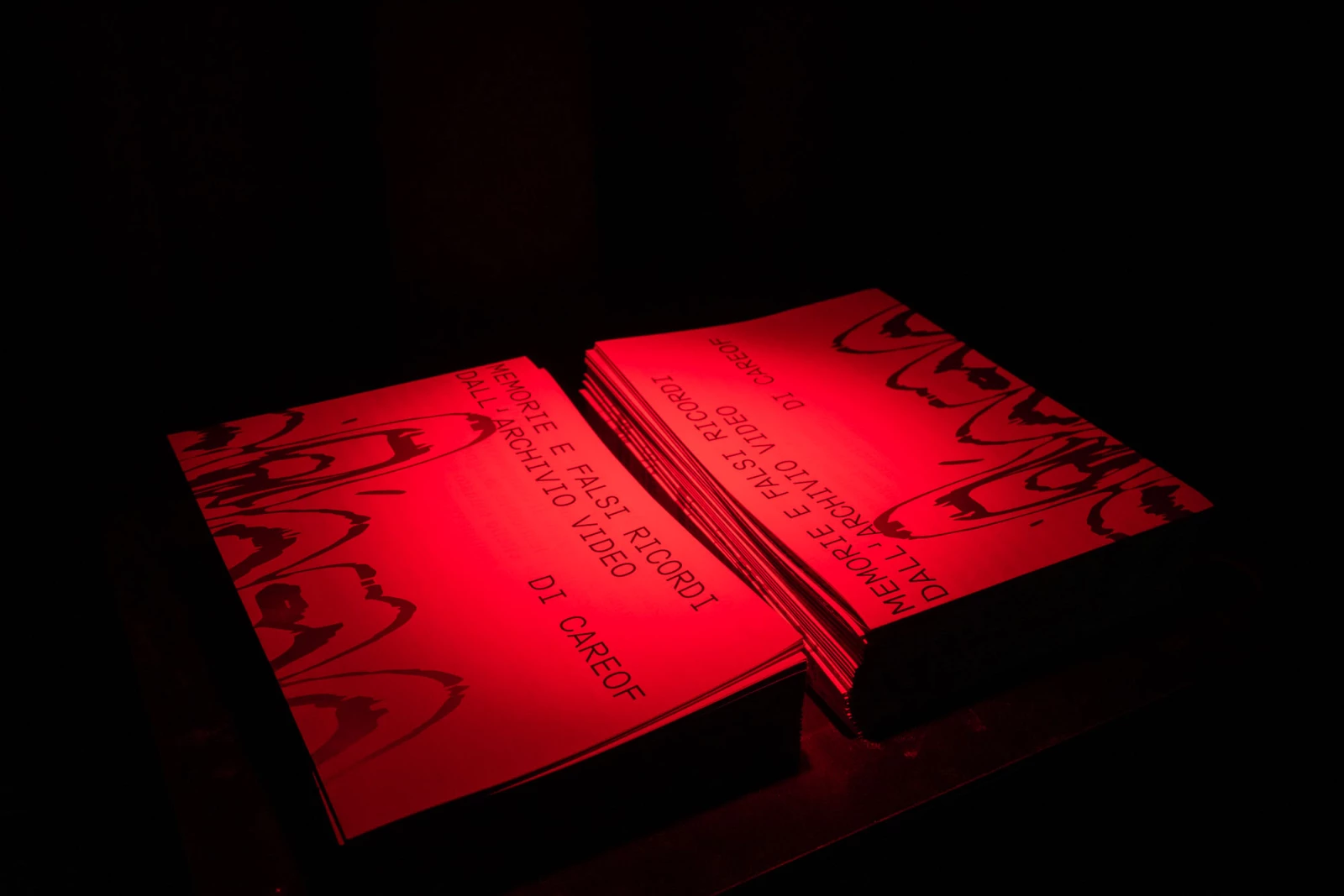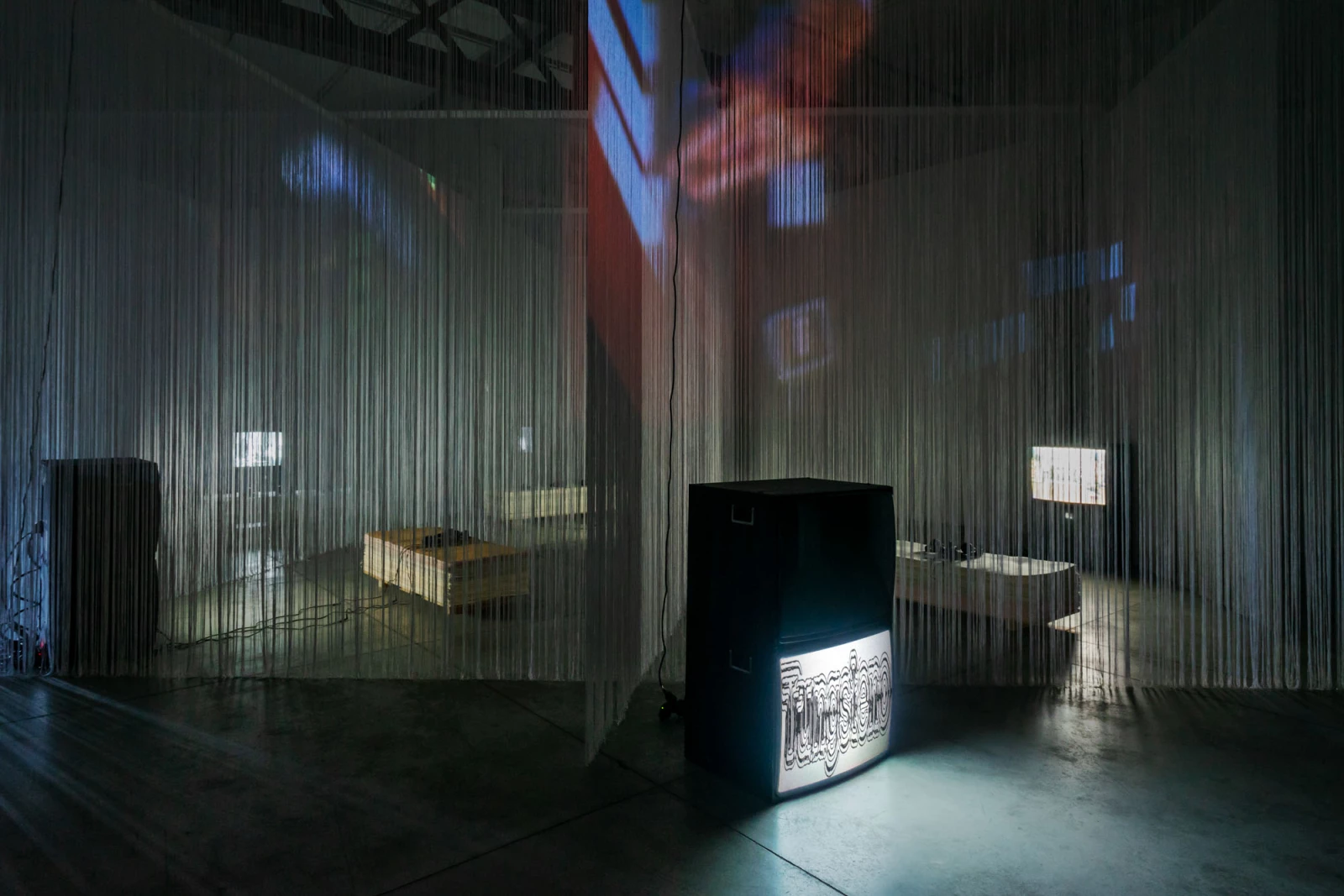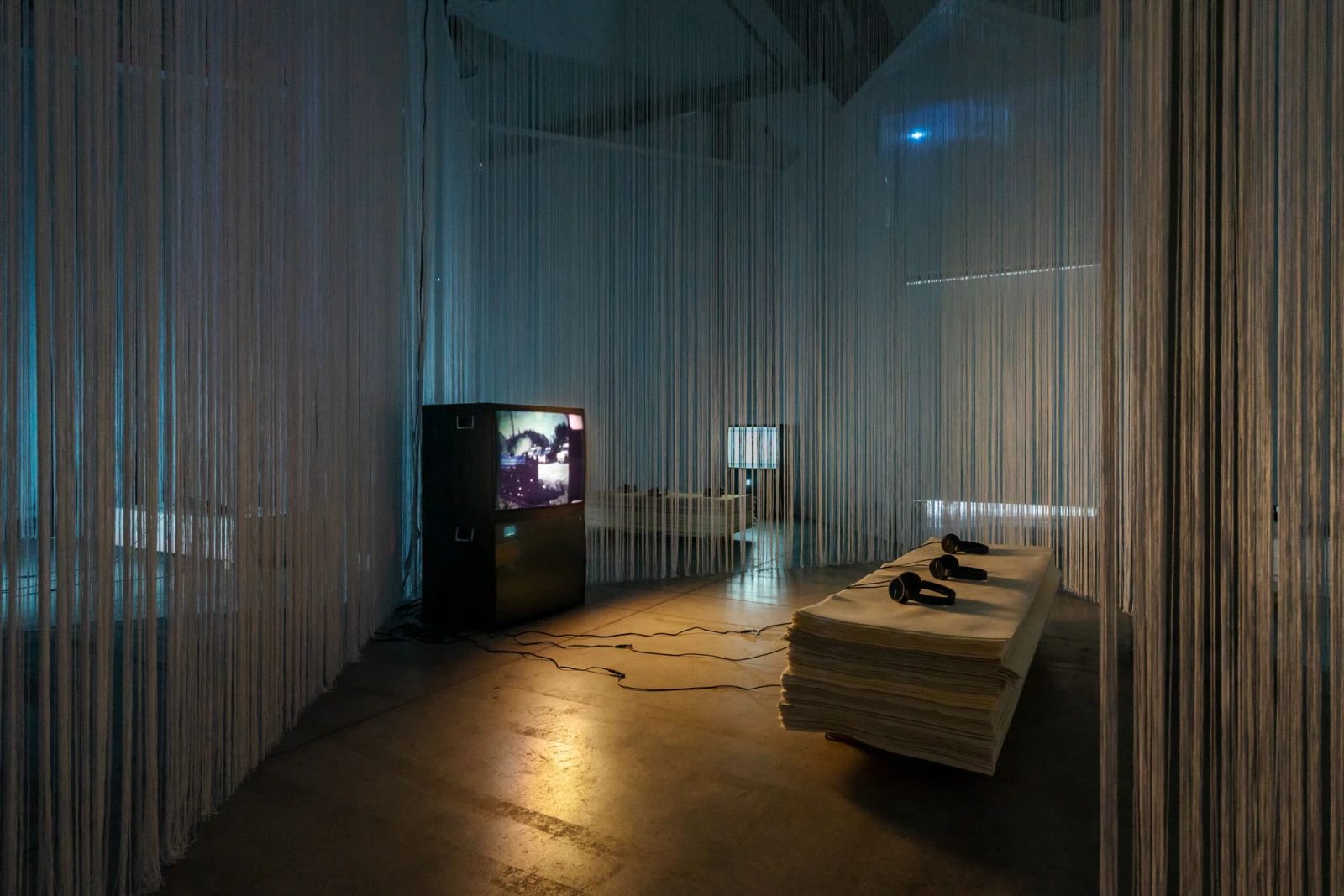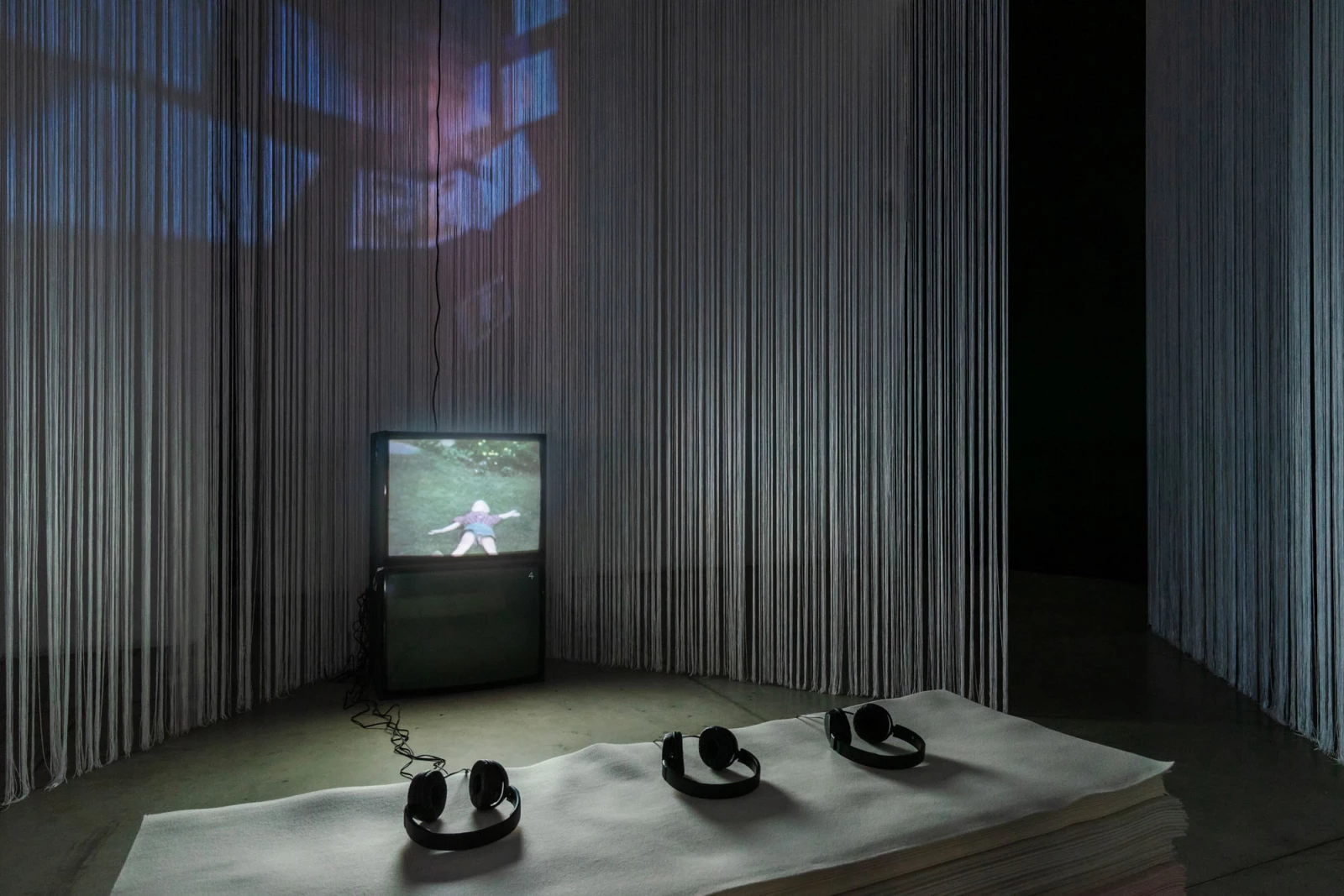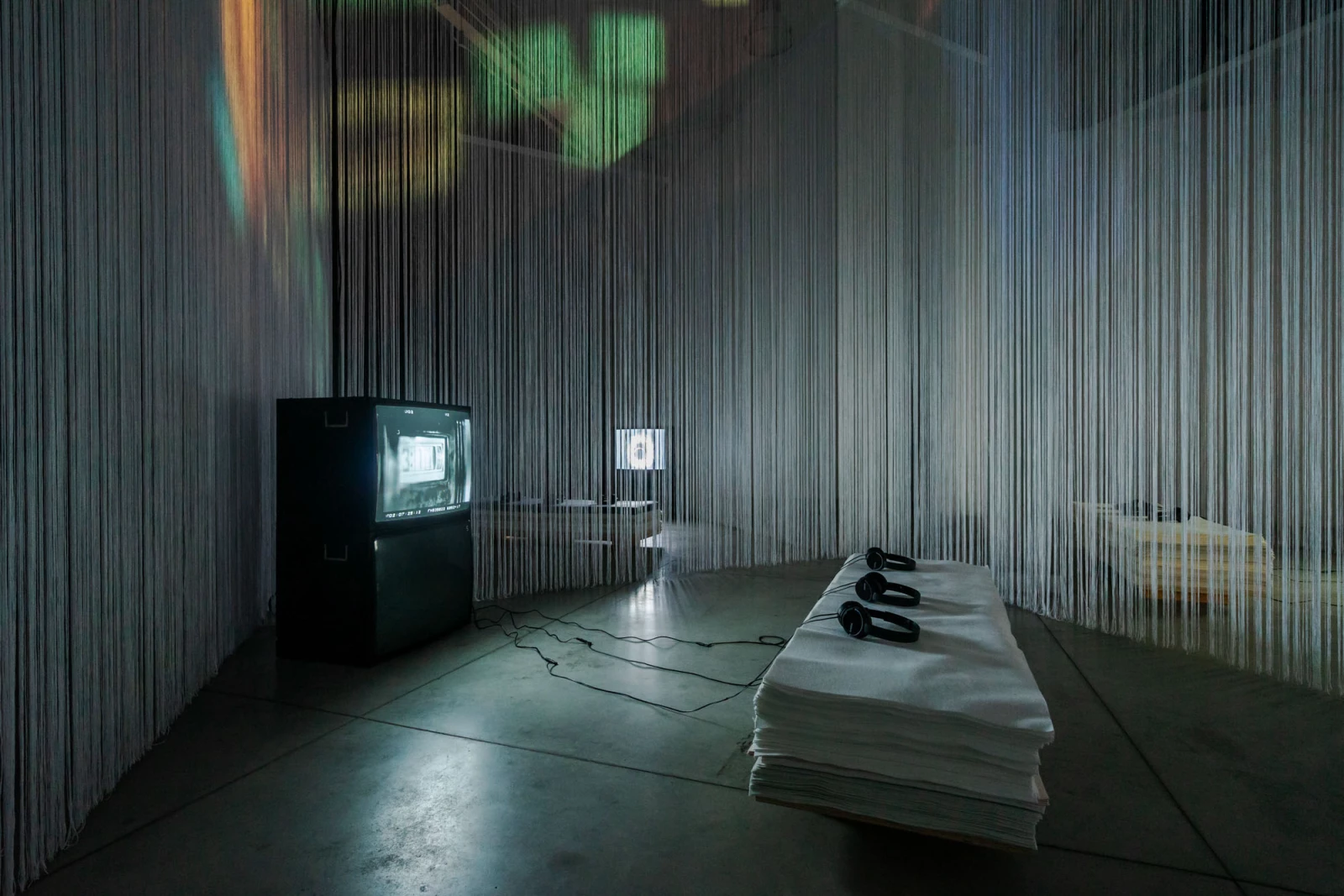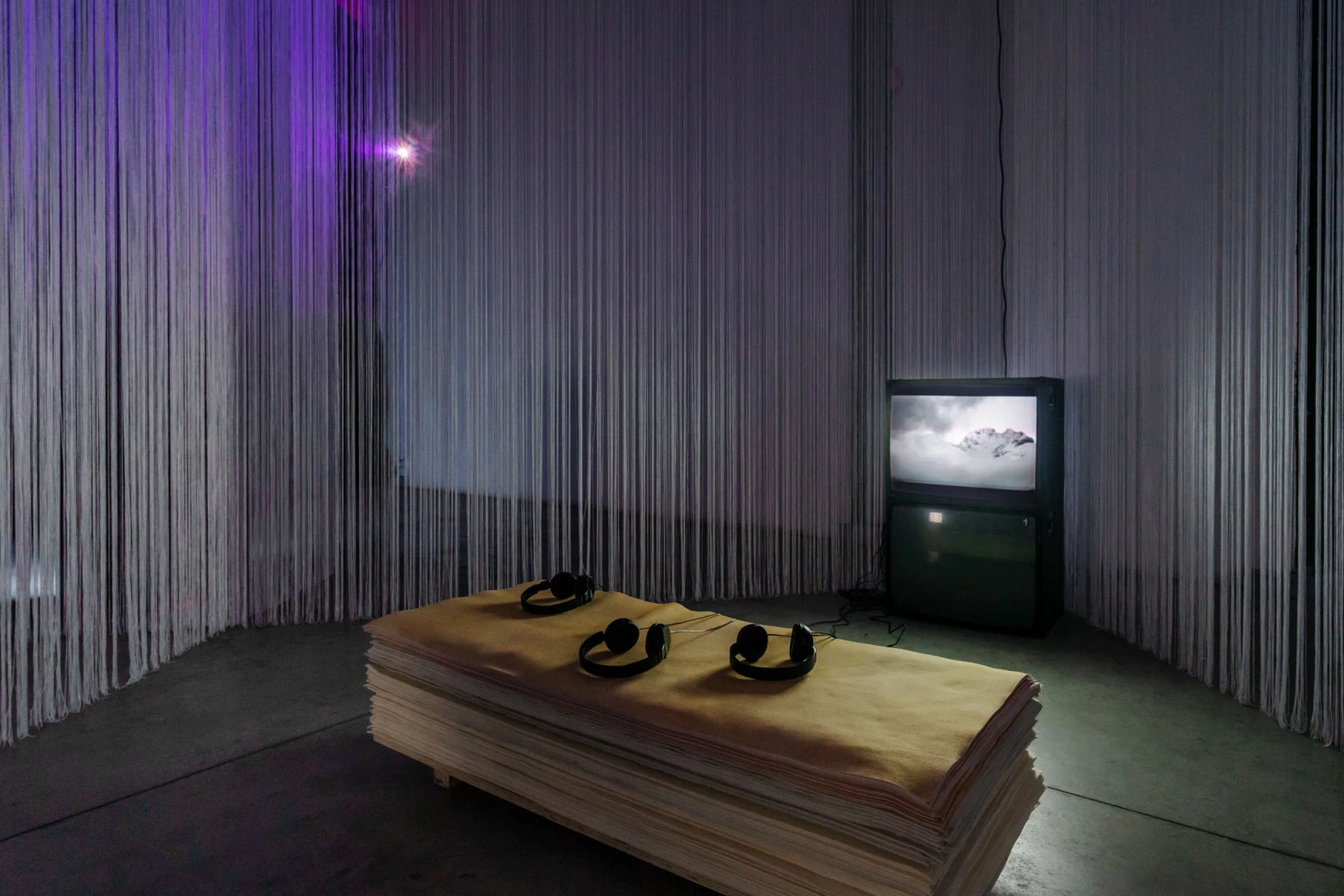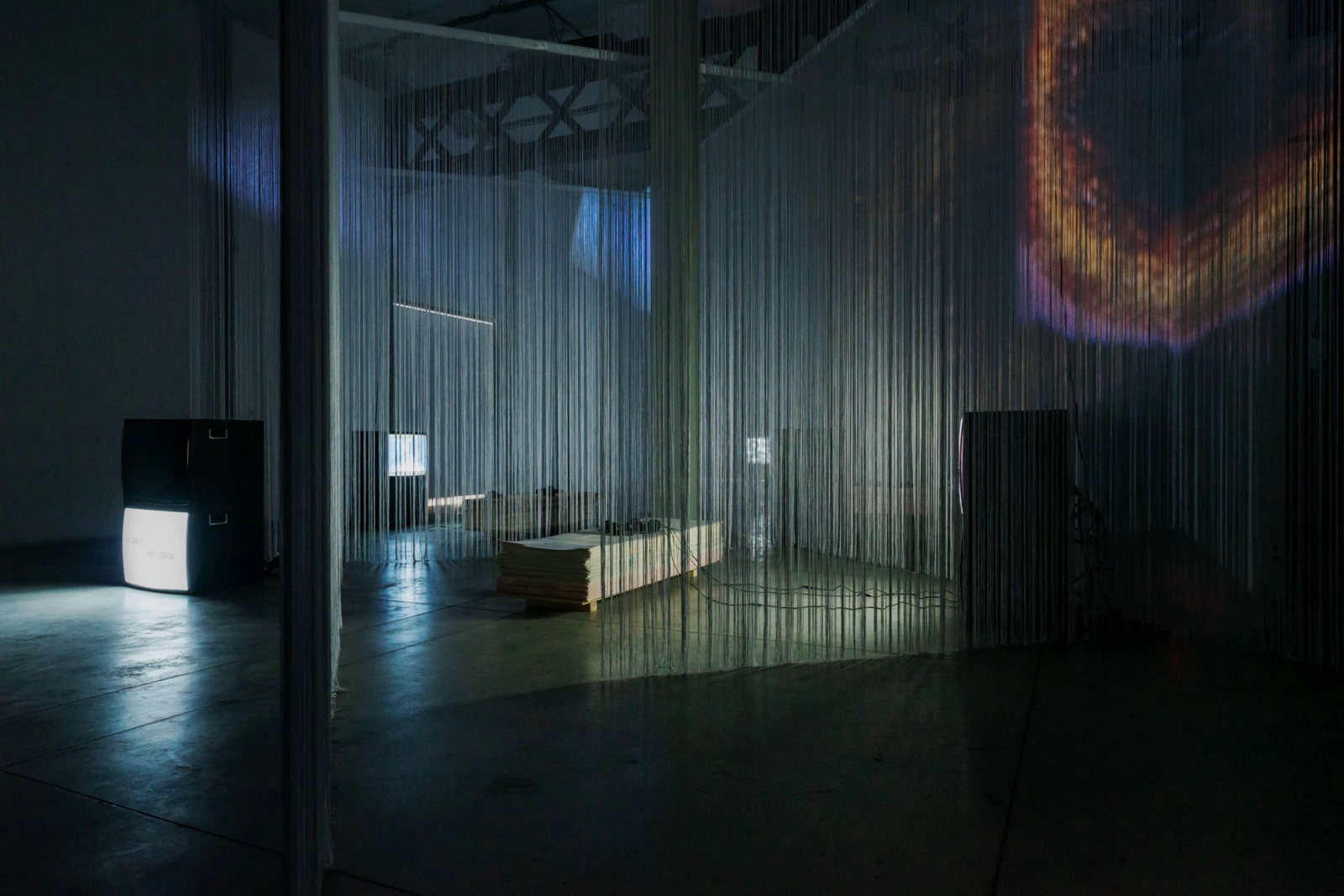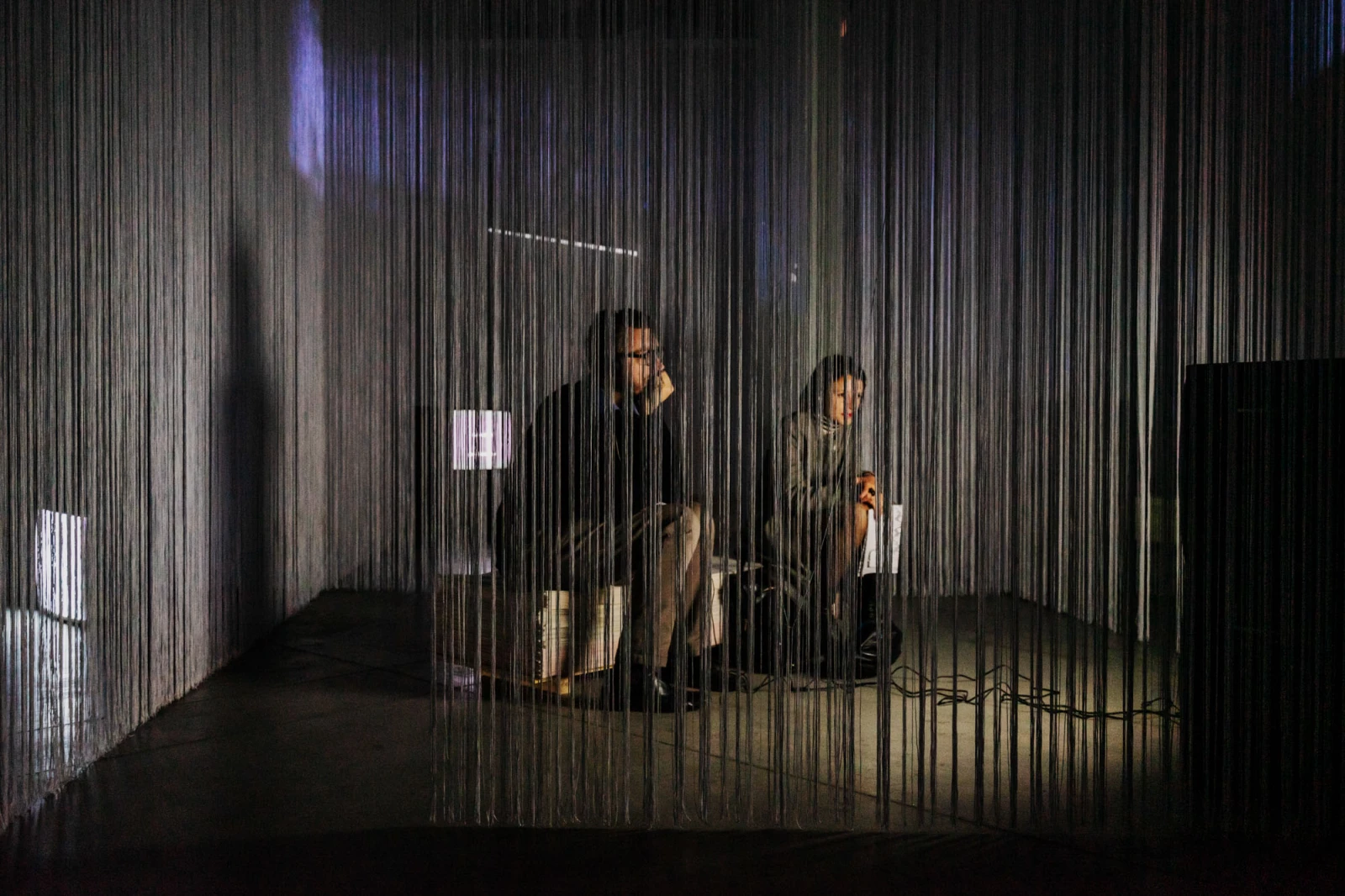Tungsteno
A cura di Marta Cereda
12.04.2023 - 19.05.2023
martedì - sabato 15.00 - 19.00
inaugurazione: 11.04.2023, ore 19.00
In occasione di Milano ArtWeek, “Tungsteno. Memorie e falsi ricordi dall'Archivio Video di Careof” prende spunto dal romanzo autobiografico del neurologo Oliver Wolf Sacks (1933 – 2015) intitolato “Zio Tungsteno. Ricordi di un'infanzia chimica”, in cui l’autore racconta, tra tanti episodi, anche la vicenda di una bomba caduta vicino alla sua casa natale, con dovizia di particolari. Un ricordo totalmente inventato di un’esperienza che lo scrittore credeva di aver vissuto in prima persona. La mostra, attingendo dal patrimonio dell'Archivio Video di Careof, che conta oltre 9000 titoli ed è riconosciuto dal Ministero della Cultura come di interesse storico nazionale, si propone così di approfondire il tema della criptomnesia, ovvero la creazione di un falso ricordo che viene però considerato creazione originale.
Coprendo un arco temporale di cinquant’anni, la rassegna presenta i lavori di ventisei artist_ che dagli anni Settanta a oggi raccontano - attraverso “found footage”, immagini d'epoca, “home movies” e la creazione di “fiction” - come la memoria, così come l'archivio stesso, non possa essere considerata granitica, bensì materia viva, fallibile, magmatica e come l'atto creativo funzioni secondo le stesse logiche.
In mostra: Felipe Aguila, Meris Angioletti, Francesco Bertocco, Bianco-Valente, Rossella Biscotti, Cristian Chironi, Valentina Coccetti, Iginio De Luca, Gianluca e Massimiliano De Serio, Elisabetta Falanga, Heinrich Gresbeck, Adrian Paci, Moira Ricci, Claudio Rivetti, Stefano Romano, Sara Rossi, Micol Roubini, Antonio Rovaldi, Jessica Russo, Marinella Senatore, Caterina Erica Shanta, Giulio Squillacciotti, Danilo Torre, Franco Vaccari, Luigi Viola, Sandro Zaccardini.
Accompagna la mostra una playlist fruibile via Spotify e una bibliografia, curata da Francesca Peschiera.
ABSTRACTS
While Fausto is talking, Ivana has her gaze fixed on the table, low in front of her. She doesn’t look him in the eyes, it hardly ever happens except for when she scolds him and, in fact, these are the only occasions she speaks to him. Those, and when she asks him “Do you want more?”. The direct object can be stew, pot roast, spare ribs, roast meat, polenta, lentils, lasagne, gnocchi, risotto, or minestrone soup. In the hot weather, vitello tonnato and ham and melon are added. In the cold weather, tripe and cassœula. For sixty-nine years, this has been the menu.
Ivana can’t hold herself back. She tightens the table’s edge with her hands, the anger on the white knuckles. She tries to interrupt him with three words: «You weren’t there» she hisses, while we look at her, as he continues, using the first person singular and taking possession of an event that doesn’t belong to him. «You weren’t there», she repeats, almost syllabizing.
But Fausto doesn’t care, it makes no difference, he continues telling that story, imperturbable. Just as if he had been there too, just as if he had lived that.
Even Oliver Sacks, writer and neurologist who has given the title to this project with his Uncle Tungsteno, has told the memory of an experience that he never lived as his own. He wasn’t at home when a firebomb fell nearby, yet he absorbed the description done by his brother to such an extent that he convinced himself that he was there, totally in good faith. This mechanism is called cryptomnesia and consists in the creation of a memory we believe to be an original experience but is an invention. These memories have a very high intensity and vividness because in their oral narration, reading, vision and dream have the same value. They show how the past can be altered, distorted, rewritten, and overwritten constantly. They testify how sources can overlap, deform, and exchange, how the origin is not important when absorption and appropriation have taken place. They challenge traditional notions of authorship and originality, confusing autobiography, and biography, and using transfer and interference mechanisms. Memory turns out to be malleable, fallible, fragile, imperfect but, for this very reason, creative and creator. This same process, this same definition can be used to define the Careof Video Archive: malleable, fallible, fragile, imperfect but, for this very reason, flexible, alive and creator.
Station n. 1:
1.A
Marinella Senatore (Cava de' Tirreni, 1977), “I Take You Back to the Star”, 2003, 4' 50”, courtesy of the artist and Mazzoleni, London – Turin
“Friederich Polsel was convinced he clearly remembered something that he'd seen the third day of his life. A similar door didn’t exist in his parents' house, but that door and its light stayed for a long time in Polsel's mind”. During the video editing, this seemingly linear narrative structure has been dismantled, with the coexistence of indoor and outdoor scenes and references from cinematography, photography and the painting tradition of the 20th century. The light gives the interpretation of the entire sequence.
1.B
Antonio Rovaldi (Parma, 1975), “Martedì 1956, Martedì 2012”, 2012, 8' 2”
On Christmas Day, the 25th of December 1956, Robert Walser died while he was walking in the surroundings of Herisau, in Switzerland, where he lived in a psychiatric clinic. Erwin Brugger, a little boy back then, found the body. Antonio Rovaldi managed to contact him. Over fifty years later, on the 25th of December 2012, Erwin Brugger took the same path and the same walk.
1.C
Elisabetta Falanga (Taormina, 1985), “Dodici pagine”, 2016, 15'
Everything is set around and on the stage of an open-air theatre. It is a non-linear narrative, with characters that reappear – sometimes interpreting different roles – and spaces that are blended and disarranged. First, we gather around a fire in underground rooms. Then, we quickly return to the stage following the rhythm of recollection and fairy tales.
1.D
Micol Roubini (Milan, 1982), “Safely Unknown”, 2009, 3' 59”
In the shadows, the shooting investigates an empty house. The light filters only through the half-closed windows, the shutters are windswept. The glance lingers on the curtains, the bed, and the tablecloth. The pace is cautious but conscious. There is no clue to know who used to live there, only memories to be invented from what is shown.
1.E
Giulio Squillacciotti (Rome, 1982), “ Scala C, Interno 8”, 2017, 7' 10”
A house, closed for ten years, is reopened and visited before being emptied. An unheard audiotape in the answering machine reveals the unconsummated love story between Fulvio Pesarini and Livia Bellagamba. It barely matters how much of the story is reality or fiction.
1.F
Caterina Erica Shanta (Landstuhl, Germania, 1986), “A History About Silence”, 2018, 21'
The core of this work is the interview to the last two survivors of Ex IMI (Italian Military Internees in German concentration camps) living in Pieve di Cadore (in the province of Belluno). Its location is difficult to set in the historiographic discussion regarding the second post-war period in Italy. The result is a veil that confined them to a space of silence and shame. This intensified the trauma, rather than allowing them to work through it and overcome it.
Station n. 2
2. A
Franco Vaccari (Modena, 1936), “L’album di Debora”, 2002, 10’58”
Is she somebody dear to the artist or is she a stranger? Where do the pictures that we are watching come from? Does the work’s title correspond to this woman’s name? How do we approach her life and her memory through photographs? How much can a collage of pictures work as an actual opportunity and reminder? How much does it allow us to know her?
2.B
Claudio Rivetti (Brescia, 1987), “Memory”, 2011, 5’ 46”
A board game played solo. We don’t know who the player is, not many clues about their identity. We watch the game, trying not only to associate and remember the position of the cards but also to recognise and recreate the stories of the stock photos printed on the cards.
2.C
Stefano Romano (Naples, 1975), “Parcae”, 2000, 5’ 30”
The central part of the trilogy Axis Mundi, titled Parcae, is a reflection about the unfolding of life, carried out with reference to Greek mythology: the Parcae determine the fate of human beings weaving, undoing and cutting the thread of life. As the yarn unravels, a voice tells a story written by Leo Merati, where the discovery of the passing of time is added to the creation of new memories.
2.D
Felipe Aguila (Santiago de Chile, 1977), “Breve catálogo de hojas perdidas”, 2005, 3’ 57”
The Spanish title gives a double interpretation: hoja means both leaf and sheet. This brief catalogue of lost sheets/leaves is a reflection on the relation between identity and memory – explained by the shootings of a plant, which was carried along by the artist during his house removals and is obviously transforming with the passing of time – with different languages referring to anecdotes and topics which anybody could relate to.
Station n. 3:
3.A
Luigi Viola (Feltre, 1949), “Do You Remember This Movie?”, 1979, 4’ 22”
This work includes the artist’s exploration in the recovery of imagination and fantasy, made possible through instruments of memory and what he calls “magic observation”. While images pass, a voice creates a spelling book which has no apparent correlation with what there is on the screen.
3.B
Bianco-Valente (Giovanna Bianco, Latronico, 1962 and Pino Valente, Naples, 1967), “WELCOME X”, 1998, 2' 41”
With the background musical composition by the band 24 Grana, there is a sequence of syncopated extracts of a natural environment – representing meadows, flowers, playful children – and images that recall visions from a microscope, cells, and neuronal circuits. They share an acid and short journey which makes it all unreal.
3.C
Valentina Coccetti (Rome, 1966), “Oh Valentina!”, 2000, 1’ 40”
A backwards journey in the childhood memories: the artist leads the audience inside the building where she attended the elementary school. First, the rhythm is given by childish voices, then by the singsong recitation of the poem by Giovanni Pascoli, Oh Valentino (1903) – in which the original text is proposed with a feminine version – before focusing on a black and white photographic portrait, perhaps representing the artist.
3.D
Sandro Zaccardini, “La memoria è custode del tempo”, 2003, 5’ 30”
The recovery and the digitalisation of home movies enable not only to preserve memory or to trace recollections, which were believed to be lost, but also to transform, modify and misrepresent them. The toning of shades, the emphasis on grain and the change of scene prevent the reconstruction of what has happened or the recognition of the characters.
3.E
Danilo Torre (Catania, 1978), “In Focus Memories”, 2010, 5’ 31”
This work is realised through combustion, with a projecting lamp, and the filming of Super 8 frames of home movies of strangers, taken from undefined and unidentifiable archives. Memories lost by their owners are transformed, the artist takes possession of them, and he sets their dissolution.
3.F
Adrian Paci (Scutari, 1969), “Albanian Stories”, 1997, 7’
This is the first video by the artist, made after his arrival in Italy from Albania. The work shows his three-year-old daughter, Jola, who is playing with dolls, telling stories in which war chronicles and memories of the conflict are blended with traditional fantasy and narrative mechanisms of fairy tales: the characters, with equal importance and value, are a cow, a pig, a cat, a cock, and some international soldiers.
3.G
Sara Rossi (Milan, 1970), “Radar”, 2005, 7’ 46”
The story of Pulcinella flying to the Moon is told by the artist using and assembling material from unrecognizable different sources, such as home movies and found footage, through a narrative construction and a soundtrack reminiscent of fairy tales. The work is divided into three chapters, where illustrations play on verisimilitude and the ability to tell, surprise and deceive.
Station n. 4:
4.A
Cristian Chironi (Nuoro, 1974), “Poster”, 2006, 27’
The artist chose seven photos from his father’s album, who was an active football player in various formations – pictures in which he is posing with the entire team.
He has reprinted them on a scale of 1:1, set them up in a space with the features of a locker room, inserting himself as a three-dimensional element. Meanwhile, the audio evokes sunny summers, news reports from 1975 and Italian hits of the past.
4.B
Iginio De Luca (Formia, 1966), “I miei pupi”, 2007, 4’ 27”
The artist breaks into the story of his parents, creating a time lag: he superimposes his moving image on the full-length, black and white photograph, taken in the 1970s in Campodimele, in the province of Latina.The result is the animation of the two static figures, which look like puppets or marionettes. The audio is an environmental shot made in the 2000s in Campodimele.
4.C
Jessica Russo, “Vivere”, 2006, 2’ 23”
The main character is the artist’s grandmother, filmed on the sofa at home while she is braiding long nylon locks. The woman is absorbed in the vision of the soap opera Vivere, which knows by heart to the point that she repeats the lines, superimposing her voice over the actors and identifying with them, entering the dialogue, and actively taking part in the broadcast.
4.D
Francesco Bertocco (Milan, 1983), “Quattro passi avanti, uno indietro, poi seduti, 2010”, 1’
The work, one of the first made by the artist, belongs to a series known as Educational Films, consisting of the processing of 16 mm films from the Prelinger collection in New York, named Educational for their original function. From this material, Bertocco isolated a single action, rewinding it and changing its meaning and value.
4.E
Moira Ricci (Orbetello, 1977), “Loc. Collecchio, 26, 2001, 4’ 21”
The cornerstone of the reflection is the relationship between reality and fiction, often confronted through the manipulation of vintage images that can become, in memory, a reliable document. The work is linked to the renovation of Moira Ricci’s birth house. It is reconstructed in cardboard, furnished with furniture and objects, filled with her photographic portraits, taken in different ages, and made by her mother. The rooms are repopulated with overlapping memories.
4.F
Heinrich Gresbeck (Florence, 1971), “Memorie di una testa tagliata”, 2001, 1’ 28”
For alteration and alienation, the artist adopts the concealment technique to focus the attention only on a small portion of what is shot.
In this case, it consists of an amateur picture of a beach, where a child is playing - what is shown is just a portion of the landscape, the remaining part is cleared by the colour white, which isolates from the context and forces to give a new meaning of what is displayed.
Station n. 5:
5.A
Gianluca e Massimiliano De Serio (Turin, 1978), “Un ritorno”, 2013, 25’
The film was born from a moment of the twin artists’ creative crisis and from the necessity to understand its reasons and how to overcome it. They were subjected to an experiment of simultaneous hypnosis capturing themselves, with the help of a hypnotist.
In the dialogue, the artists remember their childhood going backwards until prenatally, through a process of progressive regression to get to a deep introspection.
5.B
Meris Angioletti (Bergamo, 1977), “Il paradigma indiziario”, 2009, 13’ 50”
The ‘’Il paradigma indiziario’’, is more than a project or a work of art but is a method of inquiry implemented by the artist, to create connections and associations, by reversing time and expectations. The focus is on the “Underground Milan”, which Angioletti has explored thanks to the exchange of views with those who lived there. It is not historical research, but rather an attempt to create a complex and unverifiable reality. The underground becomes a mental image and projection.
5.C
Rossella Biscotti (Molfetta, 1978), “The Undercover Man”, 2008, 30’ 45”
In an atmosphere that remembers a film noir, we are looking at an interview with Joseph D. Pistone (alias Donnie Brasco), well-known for being an undercover FBI agent, was infiltrated in mafia circles for six years (1976-1982). Thanks to his ability of maintaining a role for years without being discovered, he is not only the main character but also the only witness, the only memory of facts and information that cannot be revealed yet.
Despite this, the story of the past allows new interpretations and shows how history makes a univocal interpretation impossible.
A cura di Marta Cereda
HYPEREDEN
Hypereden è un collettivo di architetti e designer, nato nel 2011, che indaga le identità fisiche e culturali
dei luoghi, la loro valorizzazione e trasformazione sostenibile nel tempo e opera con gli strumenti dell’arte
e dell’architettura nel campo della progettazione del paesaggio, urbanistica, architettonica e di interni.
Dopo qualche anno costituisce un’associazione culturale con l’obiettivo di incentivare pratiche volte alla
riqualificazione e trasformazione attiva degli spazi collettivi: collabora con realtà del terzo settore
per l’attivazione e il coordinamento di processi di trasformazione dello spazio, temporanei e a lungo termine,
sperimentando dinamiche di partecipazione e di interazione con le potenzialità del contesto.
PLAYLIST
BIBLIOGRAFIA E FILMOGRAFIA
Platone, “Menone”, IV a.C., Introduzione, traduzione e commento di Franco Ferrari, Rizzoli, Milano, 2016
Hume D., “Opere filosofiche, volume primo: Trattato sulla natura umana”, 1739, Laterza, Bari, 2008
Husserl E. “Per la fenomenologia della coscienza interna del tempo”, 1893-1917, a cura di Alfredo Marini, Franco Angeli, Milano, 1981
Bergson H., “Materia e memoria”, 1896, Laterza, Milano, 1996
Husserl E., “La coscienza interiore del tempo: lezioni del 1905 con aggiunte successive”, a cura di G. Ferraro, Filema, Napoli, 2002
Pirandello L., “Il Fu Mattia Pascal”, Fratelli Treves, Milano, 1919
Svevo I., “La coscienza di Zeno”, L. Cappelli editore, Bologna-Rocca S. Casciano-Trieste, 1923
Heidegger M., “Essere e tempo”, 1927, Longanesi editore, 2005
Merleau-Ponty M., “Fenomenologia della percezione”, 1945, Bompiani, Milano, 2003
Proust M., “Alla ricerca del tempo perduto”, Giulio Einaudi Editore, Torino, 1946-1951
Orwell G., “Nineteen Eighty-Four”, Mondadori, Milano, 1950
Calvino I., “Il visconte dimezzato”, Einaudi, Torino, 1952
Sartre J.P., “L’essere e il nulla, Saggio di ontologia fenomenologica”, Collezione Arcobaleno n.5, Mondadori, Milano, 1958
Camus A., “La caduta. L'esilio e il regno”, Bompiani, 1958
Severino E., “Destino delle necessità”, Adelphi editore, 1980
Sciascia L., “Il teatro della memoria”, 1981, Adelphi editore, 2004
Calvino I., “Lezioni americane. Sei proposte per il prossimo millennio”, Collana Saggi blu, Garzanti, Milano, 1988
Damasio A. R., “L'errore di Cartesio”, Adelphi edizioni, Milano, 1994
McEwan I., “Espiazione”, Einaudi, Torino, 2002
Saramago J., “L'uomo duplicato”, collana “Super ET”, Einaudi, Milano, 2003
Lehrer J., “Proust era un neuroscienziato”, collana Paperback, Codice Edizioni, Torino, 2008
Bromberg P. M., “Destare il sognatore”, Raffaello Cortina Editore, Milano, 2009
Kahneman D., “Pensieri lenti e veloci”, Arnoldo Mondadori, Milano, 2012
Kafka F., “Il processo”, 1914, Feltrinelli, Milano, 2014
Ernaux A., “Gli Anni”, L’Orma editore, Milano, 2015
Northoff G., “La neurofilosofia e la mente sana”, Raffaello Cortina editore, Milano, 2019
Ernaux A., “La vergogna”, L’Orma editore, Milano, 2019
Starnone D., “L’umanità è un tirocinio”, Einaudi editore, Torino, 2023
Cinema
Ingmar Bergman, “Il posto delle fragole”, 1957
Ingmar Bergman, “Persona”, 1966
Christopher Nolan, “Memento”, 2000
David Lynch, “Mulholland Drive”, 2001
Michel Gondry, “Eternal Sunshine of the Spotless Mind”, 2004
Paco Roca, “Arrugas”, 2011
Valerio Mieli, “Ricordi?”, 2018
Gaspar Noé, “Vortex”, 2021
Charlotte Wells, “Aftersun”, 2022
COLOPHON
Tungsteno
Memorie e falsi ricordi dall'Archivio Video di Careof
A cura di Marta Cereda
Dal 12 aprile al 19 maggio 2023
Careof – Fabbrica del Vapore, via Procaccini 4 Milano
Inaugurazione: martedì 11 aprile 2023, ore 19.00
Con il patrocinio di Comune di Milano
nell'ambito di Milano ArtWeek 2023
Allestimento: Hypereden
Grafica: Alessio D'Ellena / Superness
Foto: Diego Mayon
Sponsor tecnico: Testori S.p.A.
PRESS KIT
Ufficio stampa
ddlArts
Alessandra de Antonellis
alessandra.deantonellis@ddlstudio.net | T +39 339 3637.388
Elisa Fusi
elisa.fusi@ddlstudio.net | T +39 347 8086.566
Flaminia Severini
flaminia.severini@ddlstudio.net | T. +39 393 3343 937
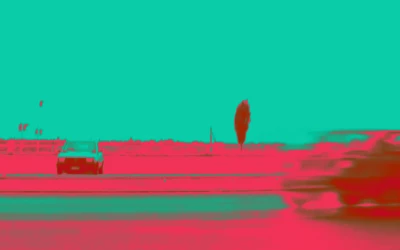
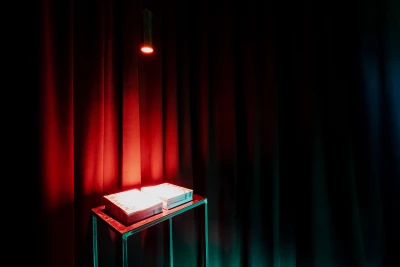
Tungsteno, a cura di Marta Cereda, Careof, Milano 2023, photo credit Diego Mayon
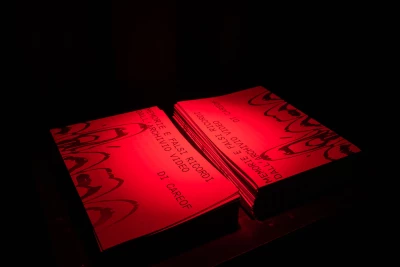
Tungsteno, a cura di Marta Cereda, Careof, Milano 2023, photo credit Diego Mayon
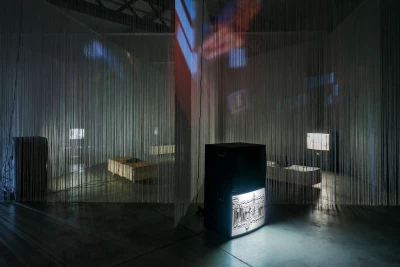
Tungsteno, a cura di Marta Cereda, Careof, Milano 2023, photo credit Diego Mayon
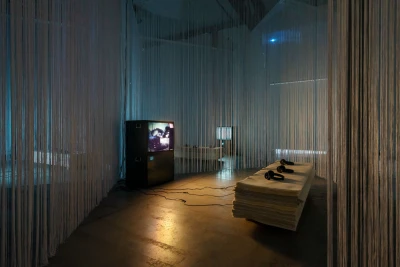
Tungsteno, a cura di Marta Cereda, Careof, Milano 2023, photo credit Diego Mayon
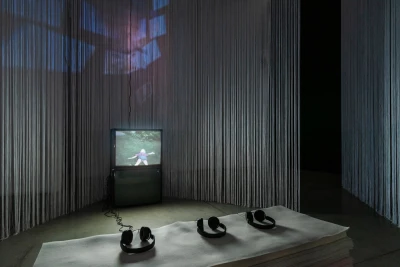
Tungsteno, a cura di Marta Cereda, Careof, Milano 2023, photo credit Diego Mayon
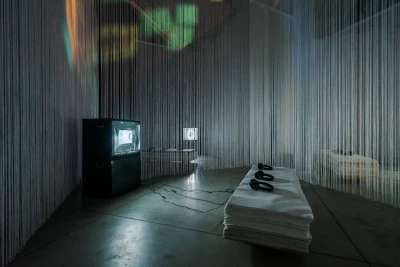
Tungsteno, a cura di Marta Cereda, Careof, Milano 2023, photo credit Diego Mayon
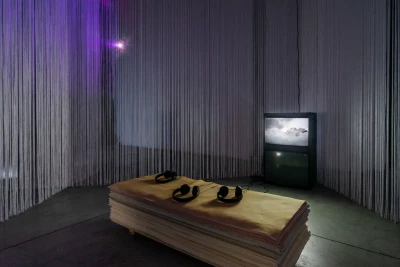
Tungsteno, a cura di Marta Cereda, Careof, Milano 2023, photo credit Diego Mayon
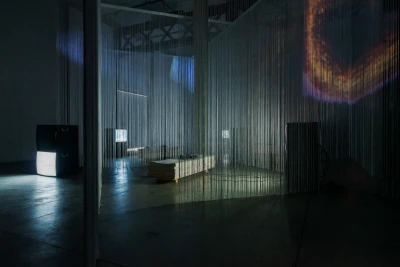
Tungsteno, a cura di Marta Cereda, Careof, Milano 2023, photo credit Diego Mayon
